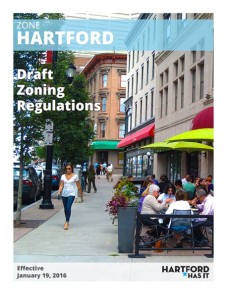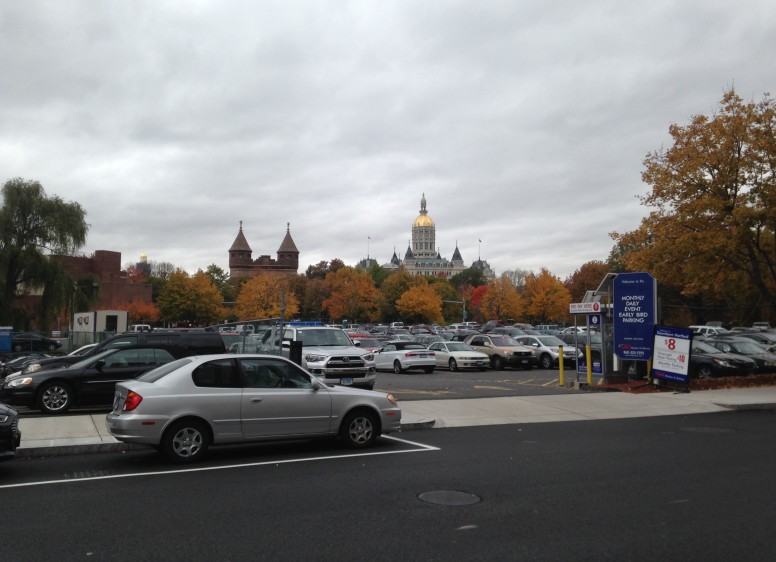Earlier this month, Hartford unanimously approved its first major zoning overhaul since 1969.
The initiative, known as ZoneHartford, has been in the works for two years, and its formal  adoption marks a shift in the city’s priorities toward more walkable, bike-friendly neighborhoods. ZoneHartford emphasizes form-based code to preserve neighborhood character and includes best practices for complete streets. These practices, including required pedestrian refuges for longer crossings and curb extensions on busier streets, are designed to encourage walking within Hartford while improving driver visibility and pedestrian safety.
adoption marks a shift in the city’s priorities toward more walkable, bike-friendly neighborhoods. ZoneHartford emphasizes form-based code to preserve neighborhood character and includes best practices for complete streets. These practices, including required pedestrian refuges for longer crossings and curb extensions on busier streets, are designed to encourage walking within Hartford while improving driver visibility and pedestrian safety.
ZoneHartford also reduces parking minimums for new developments downtown or near transit hubs, while expanding bike parking minimums. Developments near transit stops will be allowed more flexibility in exchange for greater density.
Hartford has been a car-oriented city for far too long. The now-aging Aetna Viaduct opened in 1965, bringing Interstate 84 through the heart of the city and demolishing historic communities. And since 1960, the supply of surface parking downtown has tripled. In the city of Hartford, 35.7 percent of households do not have access to a vehicle, yet 22 percent of downtown Hartford’s land area is dedicated solely for parking.
In addition to embracing a walkable and bikeable future, ZoneHartford aims to spur economic development. To that end, reducing car parking minimums is a smart step: abundant available parking has been linked to increased car use, while the city loses out on $1,200 in tax revenue per parking space every year.
In the 47 years since Hartford passed its former zoning code, residents and jobs dramatically shifted from the city to the suburbs. But with millennials and employers (along with baseball teams and college campuses) reversing that trend in more recent years, ZoneHartford presents the city with the unique opportunity to not only attract new residents, but to also establish a more equitable transportation network. The overhauled zoning code and map took effect on January 19.

